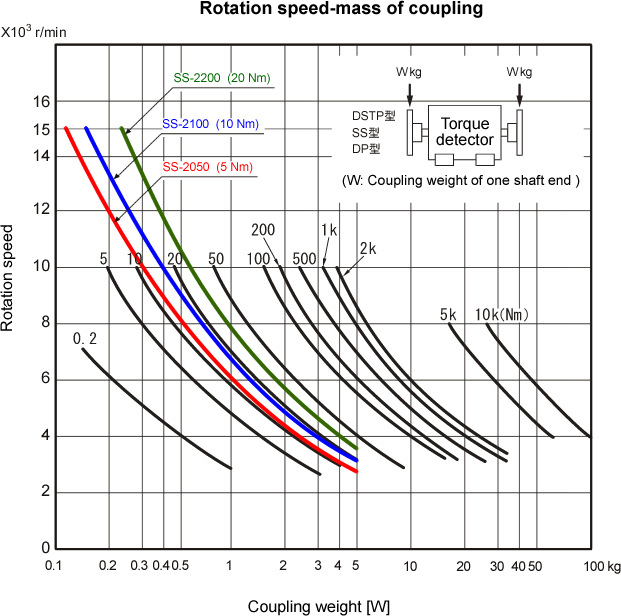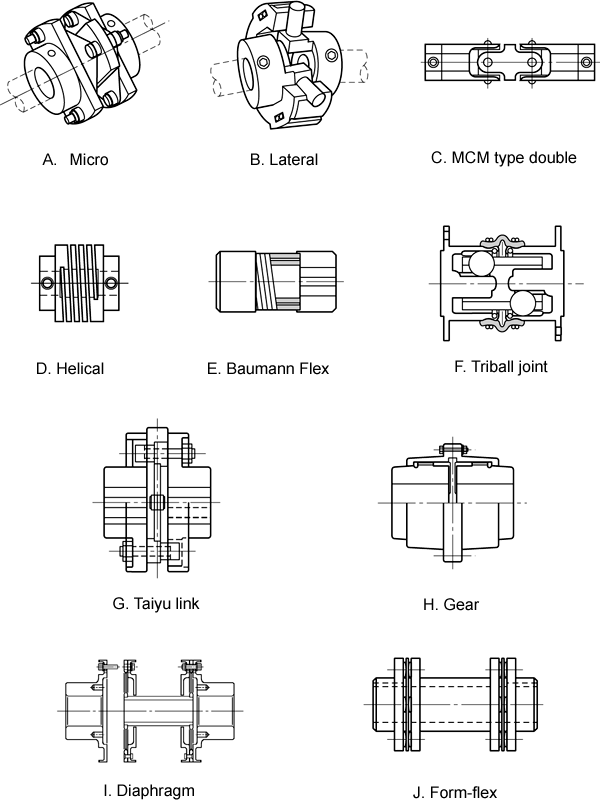

(1)Coupling and centering
Coupling centering accuracy varies depending on the rotation speed and type of coupling, however it should be kept within 0.05 mm (T.I.R :Total Indicator Reading, difference between maximum and minimum measured values).
Use a flexible coupling. If the machine and coupling are not properly centered, a large bending force will occur in the detector shaft, possibly resulting in damage to the bearings or shaft breakage.
When a load resulting from displacement of the shaft due to the spring constant is large, it is very important to ensure the highest degree of centering accuracy even if within the allowable dimensions. If abnormal noises emanate from the coupling, re-center until the noise is eliminated. Greater centering accuracy is required as speed of rotation increases.
Thrust loads should be kept to approximately the mass of the
coupling.
See also the Torquemeter FAQ 「Coupling selection and centering accuracy」.
(2)
Coupling selection
The mass of the coupling fitted
to the detector is determined by the maximum speed of rotation
used. Select from the curve for the detector rating in the
following table.

Shapes and characteristics of
couplings differ by manufacturer. The drawings below show
couplings rated up to 4000 rpm. Care is required with dynamic
balance, eccentricity, and angular deviation, etc. when used at
speeds of 4000 rpm or more. It is recommended that comparatively
small-capacity detectors be of non-magnetic material to avoid
magnetic effects. Contact the coupling manufacturer for details.
We are able to provide a detector and coupling as a set.

(3)
Coupling fit
An interference fit is required
when coupling to the end of the shaft. A clearance fit may
result in corrosion of the end of the shaft, with consequent
change in strength and dimensions, and failure. The normal
interference is between 5D/10000 and 1D/10000 (D: shaft
diameter). Apply molybdenum dioxide, etc. to the fitted surfaces
as a lubricant.
Revised:2006/06/09